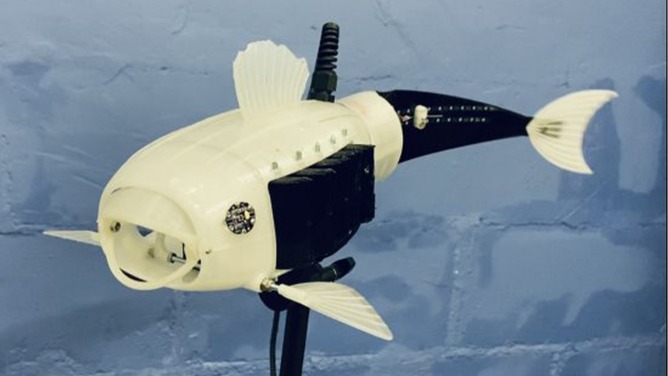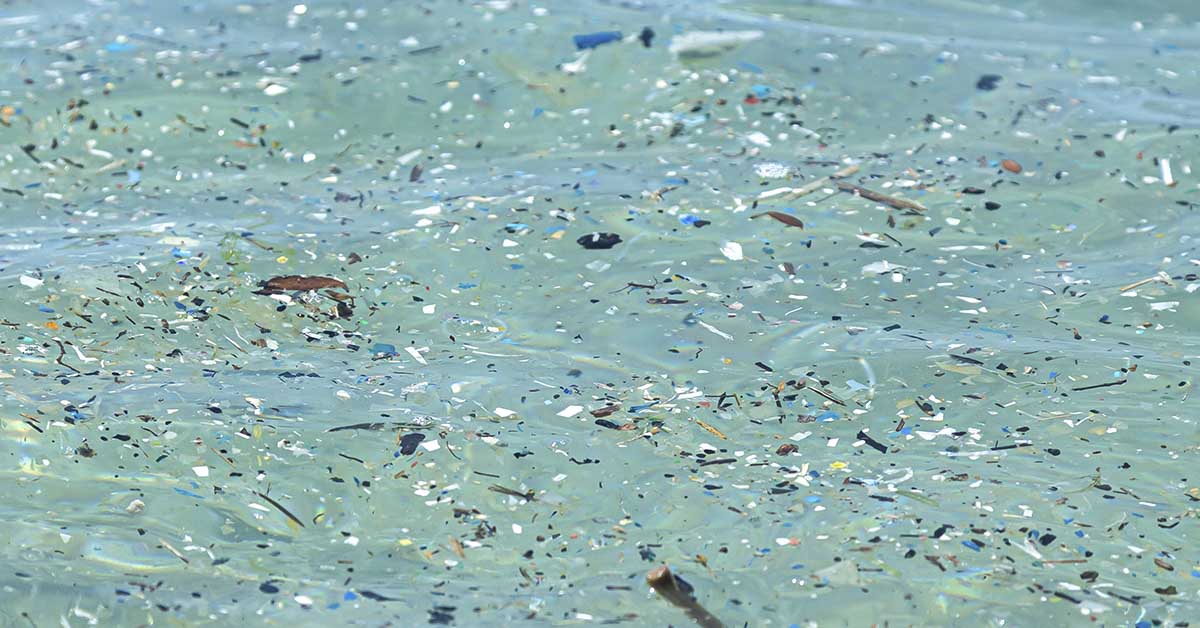While there have been several detractors who believe that robots would be the end of the world- it might not be the case. In the recent Natural Robotics Contest, all of the participants had been asked to create a robot that was inspired by an animal. They would also have to be useful when it comes to saving the planet. The winner of this competition would see their design seeing the light of day under the ministration of senior scientists and engineers.
Although there were several brilliant designs- some of which included eagles, bears, and mosquitoes- the winner was a 3D Printed Fish. This was the brainchild of Eleanor Mackintosh, who designed a fish that was capable of eating microplastics. The design was named Gillbert. I’m guessing that extra ‘L’ was intentional. The design for this robot involves layers of mesh that have been attached to the gills of the fish. These also constitute a large part of the head unit. The mesh can also be useful for sieving out tiny particles.
The head of the committee body for the competition, Dr. Robert Siddall, teaches aerospace engineering with a focus on robotics at the University of Surrey, where the entire competition was based. He mentioned that there were a large number of designs that had been submitted by students and individuals around the world. Every single applicant hoped that it would be their creation that would be turned into a functioning robot.
Interestingly, a couple of these designs also included a robotic sea urchin, as well as a forest-protecting robot bird. Speaking to FOX Weather, Siddall stated, “We chose Eleanor’s both because we really liked the idea and the way it used bioinspiration, but also because cleaning up ocean plastic was the most common purpose among all the entries we received, so we thought our winner should reflect that.”
A 3D Printed Fish That Can Eat Microplastics
The winner of the competition for her 3D Printed fish, Mackintosh stated, “It’s well known that we have a problem with plastics in the environment. We face the challenges of figuring out ways to reduce and prevent it as well as clean up the water that’s already out there. I decided to base the design on a fish and focus on the properties of gills specifically since fish use their gills to filter oxygen into their blood.”

She decided to transmute that into a filter for the microplastics found in the ocean. “I tried to design it in such a way that it worked much as fish gills work. With the mouth open and gills closed, water and particles fill the cavity within the fish’s body. After that, the mouth shuts, the gills open, and the cavity is compressed to force the water out of the gills and through the mesh filter, which will trap microplastics within the body of the fish.”
Read: Irish boy’s innovative idea can remove up to 88 percent of microplastics from water
The 3D Printed Fish Has Already Been Introduced To Small Streams and Lakes
As it turns out, the 3D Printed Fish wasn’t Eleanor’s first idea. She had a design in mind that was based on a plant. However, she decided to extrapolate on the robot fish. “So, I decided to refine that concept instead. At that point, there were only a couple of iterations of the design before I was happy with the final version.” And as soon as she won the competition, the senior scientists and engineers decided to start working on it.
Dr. Siddall stated, “We took some time and discussed our approach to building it and then got straight to designing. Our rule for ourselves was that it had to only use components and manufacturing that everyone could access, which is why the entire robot is 3D printed.” Nevertheless, the process wasn’t remotely easy. Siddall mentions, “We went through a couple of prototypes. The first version of the fish sprung a leak, and we destroyed all the electronics. In the end, it took about a month to design and build.”
The Future Of Gillbert
The 3D printed fish was finally transformed into a full robot- with hopes of duplicating the procedure aplenty. The lead scientist mentioned, “I already have a few students working on robotic boats for sampling water health, so the fish will be added to our fleet. Our plan is to make a base station that the fish can dock with to deliver samples and recharge. It has the sensors onboard needed for autonomy, but we need to write a lot more code to make it swim on its own.” With Gillbert being tied up to a power source, the University has not risked exhibiting it in any major sea or ocean.
Siddall went on to state, “We emphasized small lakes and streams mainly because that’s where there is a real lack of data compared to the oceans. The fish could happily swim in the ocean, although it’s only plastic, so it couldn’t go especially deep. I am only working with other researchers at the moment, but I’m talking to wildlife and nature trusts to do some pilot robot missions in the near future.”
Keep Reading: More than 90% of trash in North Pacific Garbage Patch comes from just six countries
Sources
- “Student helps create a 3D printed, microplastic-eating fish that can clean lakes.” Upworthy. Heather Wake. October 28, 2022.
- “Meet Gilbert: The robotic fish designed to help clean plastic from our waterways.” Fox Weather. Steven Yablonski. October 2022.

